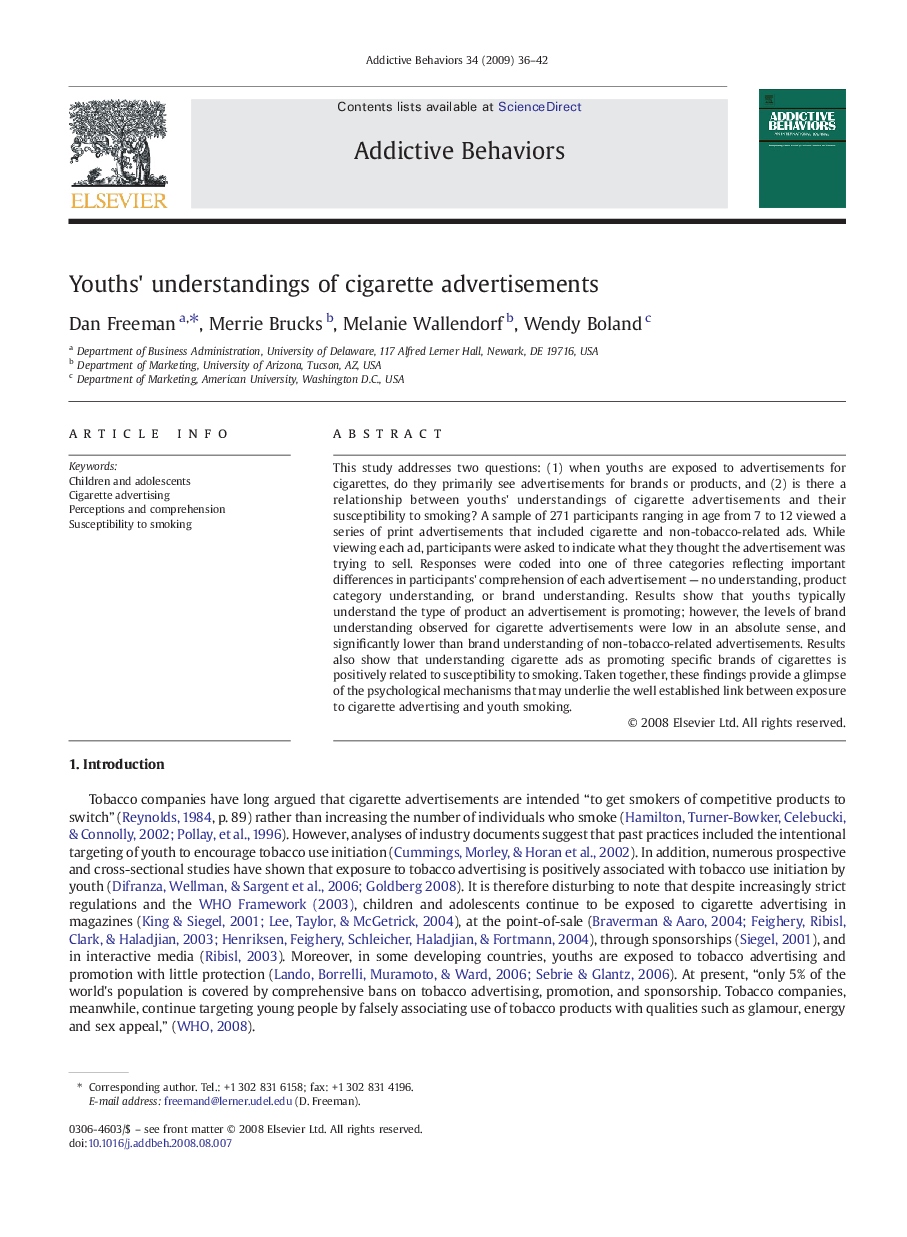| Article ID | Journal | Published Year | Pages | File Type |
|---|---|---|---|---|
| 899685 | Addictive Behaviors | 2009 | 7 Pages |
This study addresses two questions: (1) when youths are exposed to advertisements for cigarettes, do they primarily see advertisements for brands or products, and (2) is there a relationship between youths' understandings of cigarette advertisements and their susceptibility to smoking? A sample of 271 participants ranging in age from 7 to 12 viewed a series of print advertisements that included cigarette and non-tobacco-related ads. While viewing each ad, participants were asked to indicate what they thought the advertisement was trying to sell. Responses were coded into one of three categories reflecting important differences in participants' comprehension of each advertisement — no understanding, product category understanding, or brand understanding. Results show that youths typically understand the type of product an advertisement is promoting; however, the levels of brand understanding observed for cigarette advertisements were low in an absolute sense, and significantly lower than brand understanding of non-tobacco-related advertisements. Results also show that understanding cigarette ads as promoting specific brands of cigarettes is positively related to susceptibility to smoking. Taken together, these findings provide a glimpse of the psychological mechanisms that may underlie the well established link between exposure to cigarette advertising and youth smoking.
